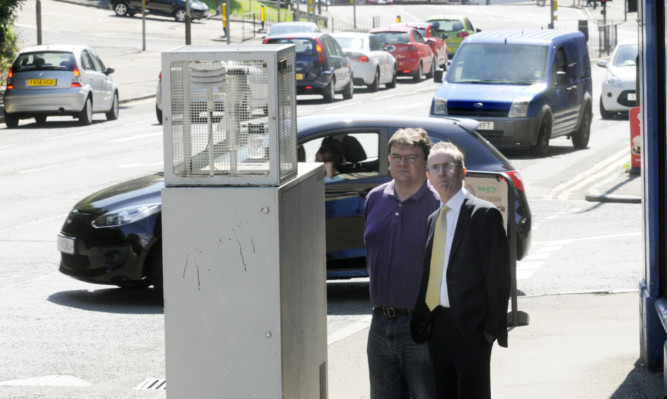Two councillors have demanded action to clean up Dundee’s toxic streets.
Richard McCready and Fraser Macpherson have called on the council to do more to purify the “dangerous” pollution on the city’s streets.
Their calls come after The Courier revealed four city roads were ranked among the worst in Scotland for the presence of nitrogen dioxide, which can cause fatal heart and lung disease, as well as asthma.
Last night, environment convener Craig Melville said the council’s action plan on pollution was bearing positive results.
He pointed to a recent council report that showed key pollution indicators falling in many areas.
But Labour environment spokesman Mr McCready said: “It is time for effective action. I am calling on the city council to get all the relevant parties round the table and to make sure that something is done.
“It is not good enough to leave Dundonians exposed to dangerous levels of pollution.”
He was joined by Liberal Democrat Mr Macpherson, who agreed the council needed to do more.
He pointed to the research revealed in The Courier that showed Lochee Road, Seagate, Whitehall Street and Meadowside were among the 12 most polluted streets in Scotland.
He said: “It is vital there is a proactive approach to tackling the air quality issue.
“In the case of the air quality in Lochee Road, a significant number of constituents live in the tenement flats on the south side of Lochee Road near to the junction where nitrogen dioxide are unacceptably high.
“It is therefore important that the council has a clear strategy for improving air quality here.”
Friends of the Earth say that cities in Scotland like Dundee could face financial penalties for failing to meet clean air targets.
Mr Melville said: “We are moving in the right direction and we enjoy tremendous support from Transport Scotland and the Scottish Government on this issue.
“There is a huge amount of effective work going on.”
Mr Melville pointed to a report that went before the environment committee in December that showed the presence of key pollutants falling.
It reads: “Of the seven National Air Quality Standards pollutants, there is no risk of exceeding the statutory objectives for benzene, carbon monoxide, 1,3-butadiene, sulphur dioxide and lead.”
It also says that five of the six real-time monitors for nitrogen dioxide showed an annual 12.6% reduction in the pollutant.
Mr Melville continued: “Of course, this is a complex issue and even environmental groups accept that it will take time to resolve.
“But this report shows we are moving in a positive direction and will continue to do so.”
